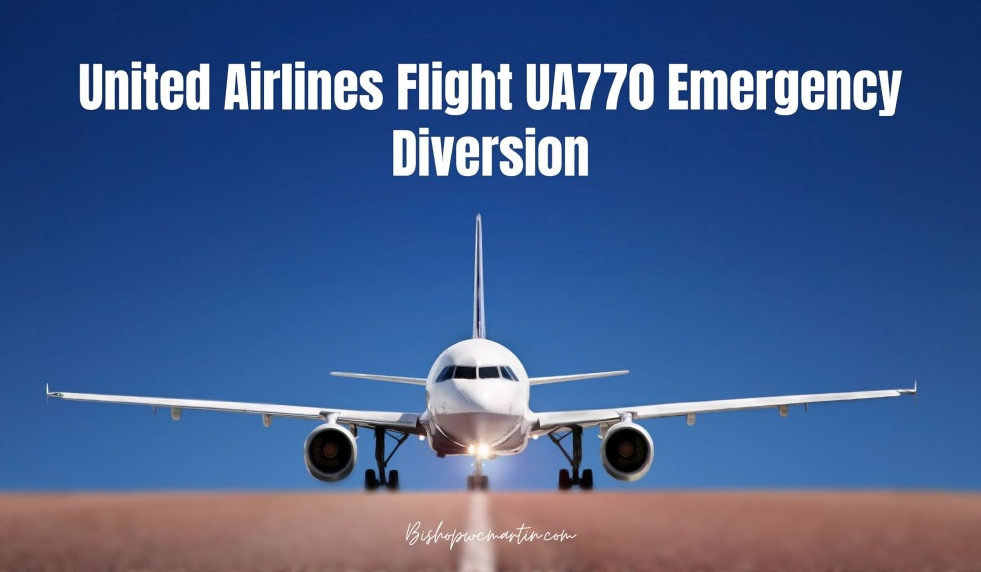Introduction
In modern aviation, safety is always the top priority—sometimes requiring unexpected decisions that turn routine flights into remarkable testaments to preparedness. Such was the case with United Airlines Flight UA770, which recently executed an emergency diversion in response to onboard technical alerts. What followed was a seamless demonstration of protocol, calm piloting, and industry-grade infrastructure guaranteeing passenger safety. This article unpacks the incident in detail—from the trigger to the landing, and the broader implications for aviation safety.
Flight Overview & Emergency Moment
Flight UA770 embarked on what passengers expected to be a routine transatlantic or cross-country journey. However, during cruising altitude—roughly 37,000 feet—pilots detected a potential pressurization issue. While such alerts can be minor, they are never taken lightly, as cabin pressure is critical for safe, breathable conditions.
In aviation, any serious in-flight deviation triggers a declaration of emergency using squawk 7700—a universal alert broadcast to air traffic control and surrounding traffic, signaling elevated urgency.
Decision for Diversion & Airport Selection
Faced with the anomaly, the flight crew opted to divert to London Heathrow Airport, a major international hub equipped with advanced emergency response facilities, technical support, and proximity to the aircraft’s current path. This choice prioritized safety over convenience, leveraging Heathrow’s robust ground infrastructure and United Airlines’ pre-existing resources there.
Crew Response & Communication
Throughout the diversion, the flight deck and cabin crew maintained professional composure. Their clear announcements and measured updates reassured passengers, making the situation feel managed rather than panicked. Importantly, oxygen masks were not deployed—indicating a precautionary diversion rather than a catastrophic depressurization.
Passengers remembered the calmness of the crew:
“Unsettling but handled with incredible professionalism,” one remarked, capturing the blend of anxiety and reassurance.
The Landing & Immediate Aftermath
The aircraft landed smoothly at Heathrow, touching down—according to one report—on Runway 27R around 4:55 PM BST, where emergency ground teams were ready. It then taxied to Gate B44 for technical inspection.
United Airlines promptly activated its emergency protocols: passengers received assistance with rebooking, accommodations, meals, and onward travel. Engineers conducted thorough checks of the pressurization system to identify and rectify the cause.
Technical Insight: Why Pressurization Matters
Cabin pressurization is critical. Without it, passengers face hypoxia in mere minutes. Modern aircraft—like the Boeing 787 Dreamliner reportedly in use for this flight—feature redundant pressurization systems, automated alerts, and sensor networks designed to detect even minor deviations early.
Detecting a potential fault and diverting early—rather than pushing onward—is standard aviation prudence. It showcases the reliability of modern safety systems and the effectiveness of preemptive action.
Ripple Effects on Operations and Passengers
Diversions inevitably cause disruptions. For UA770, this meant delays both onboard and for connecting travelers. Nearby flights may have experienced reroutes or hold-ups as air traffic control reprioritized arrivals. Ground logistics at Heathrow—including gate and runway allocation—also adjusted rapidly to accommodate this unexpected landing.
But in such situations, passengers’ safety and well-being outweigh the inconvenience.
Industry Reflections & Lesson Points
-
Safety Over Schedule
The UA770 incident reaffirms that when in doubt, safety prevails—schedule disruptions are secondary. -
Crew Training Is Vital
The flight crew’s composed and effective handling of the incident highlights how rigorous training translates to real-world crises. -
Technology and Redundancy Work
Sensor alerts and system redundancies prevented escalation—even if the issue turned out minor—demonstrating reliability in modern aircraft design. -
Transparent, Reassuring Communication Matters
Handling passenger anxiety with calm messaging reduces panic and builds trust mid-crisis. -
Passenger Experience & Support
Post-landing assistance—including rebookings, accommodations, and clear communication—anchors a positive perception even amid stress.
Broader Impacts for Aviation Culture and Public Perception
Diversions like this serve as reminders of aviation’s complexity and the value of robust safety cultures. For the flying public, the incident underscores how rapid detection, professional response, and resilient systems combine to protect passengers even when things go unexpectedly wrong.
Reports and discussions across aviation forums and media underscore that such diversions are proof—not failure—of aviation systems functioning properly.
Conclusion
United Airlines Flight UA770’s emergency diversion is a textbook case of safety protocols in action. A pressurization alert was detected, the crew responded decisively, passengers were reassured, and the aircraft landed safely at Heathrow.
While operations were disrupted and journeys were delayed, the outcome demonstrated that the aviation industry consistently puts lives first. This incident reinforces the industry’s commitment: transparency, training, technology, and emergency preparedness combine to keep air travel among the safest modes of transportation worldwide.
